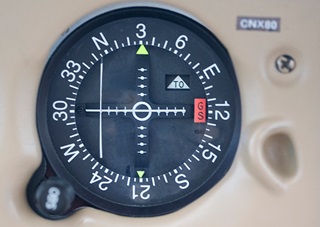The Beech Baron was in instrument conditions, with a multiengine student and an instructor seated up front. Another CFI rode behind them. An alternator-caution light had marked the flight, which was soon to be established on the destination’s ILS approach.
Now the GPS was acting up. As the pilot flying worked the problem, a new complication arose: vertigo.

"Trust the instruments," the multiengine student said.
That’s not a typo. After the aircraft entered IMC, the instructor, who had been letting the multi student fly from the right seat, resumed the controls, and was trying to select the approach in the GPS.
"This is where it gets embarrassing," the instructor wrote in an Aviation Safety Reporting System narrative. "I couldn't intercept the localizer. According to the moving map I was right where I was supposed to be, but the HSI was showing the localizer and the glideslope were not coming in."
ATC provided vectors. But with vertigo, "It was taking almost all my attention to just fly the plane let alone troubleshoot the NAV/GPS issues."
The back-seater pitched in, helping the multi-student set up the approach. But with the course deviation indicator fully deflected, the instructor informed ATC of the problem and requested vectors to the missed-approach navaid—wisely preselected in the No. 2 nav—for a VOR approach.
Pilots learn in primary training that vertigo is a powerful distracter. Here’s how powerful: "I did recognize I was being affected by the leans but I felt I could not trust my instruments," the instructor wrote.
Fortunately, training allowed a root navigation concept show the path out of danger: When the CDI became fully deflected, time was up for troubleshooting a glitchy GPS.
Recall an instrument rating practical test standard: A three-quarters scale or more CDI deflection is unacceptable. In VOR navigation, full deflection "indicates the aircraft is 12 degrees or more off course." (To review: At 60 miles, a degree off course equals a mile off course.)
On most localizer courses, full deflection indicates 2.5 degrees. With a maximum one-quarter scale deflection maintained, “the aircraft will be aligned with the runway,” explains the Instrument Flying Handbook.
"Dots out" may be a common measure pilots use to measure their tracking skills, but review the lateral displacements those dots represent.
Fly PTS-grade practice approaches, and if the CDI deflects full scale, it’s time to miss.



